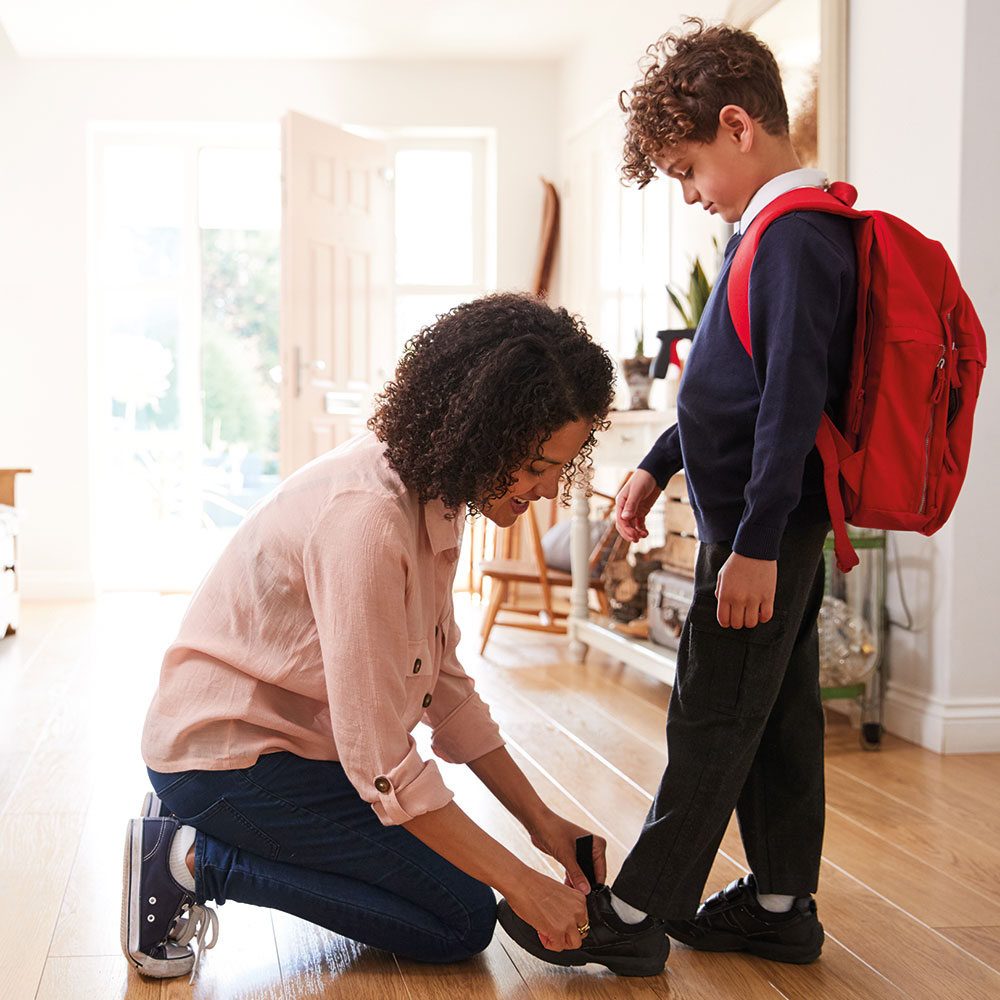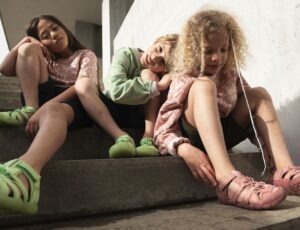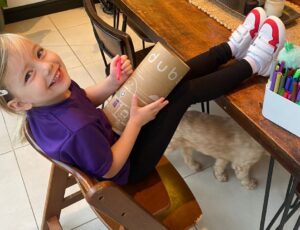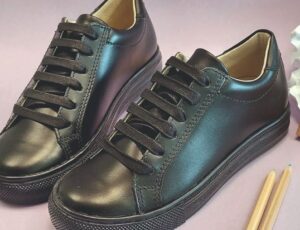
The Society of Shoe Fitters was founded in 1959 as a not-for-profit making organisation to assist both the trade and public in circulating information relating to good shoe fitting and foot health. Here, the Society brings its attention to best practices when it comes to school footwear.
Making sure a child has shoes that fit correctly is probably one of the most important things a parent can do to protect their child. Ill-fitting footwear can create numerous pains and health problems within a lifetime, and early damage can be long term. We don’t want to scaremonger, but everyone needs to be aware that shoes are not just an accessory; they are the only item of clothing that can affect your entire physiology i.e., balance and the way you walk. If your feet are painful, you alter your gait to take away the pressure. This in turn ‘wears’ other joints and tendons unevenly, which are then prone to arthritis and rheumatism in later years. Backs, knees and hips are mostly affected.
Covid caused so many problems regarding shoe buying, particularly for children.
Despite the Society of Shoe Fitters and Children’s Foot Health Register lobbying to keep independent qualified shoe fitters open, it fell on deaf ears. It meant that many new parents have had no guidance regarding their children’s feet and footwear, and simply had to turn to the internet – which we all know is unreliable. There is no substitute for the experience and knowledge of a qualified or trained shoe fitter to spot a potential problem. They know a foot gauge is merely a guide – not necessarily the size you need. It is the starting point to the correct fit because all shoes vary in volume dependent upon last shape, materials and even country of origin.
It is vital that children have supportive, appropriate footwear to go to and from school; to withstand the rigours of the playground and to protect feet against colder, wetter weather. Again, Covid is playing its part, because some schools have allowed their uniform policies to lapse, knowing that parents have struggled to purchase the right footwear, thereby allowing them to wear trainers and plimsolls all day.
So, what sort of footwear should school-age children be wearing?
• Both feet should always be measured for size and width because one foot may be different from the other. The larger foot should be catered for, and orthotic materials added to the shoe to fit the smaller foot; not squash the larger foot into shoes too small. A professional can spot a potential problem forming or advise on the right style if a child has a problem gait. For instance, pronation, supination, low ankle bone, high instep etc.
• A fitting gauge is merely a guide. No two gauges are the same, as no two pairs of shoes or feet are the same. Gauges are all calibrated differently to the manufacturers’ lasts – the form the shoe is made on. There is no standardisation of shoe sizing in the UK, which is why a qualified shoe fitter is so important to interpret the correct shoe for the shape of the foot. A size is just a number and means very little.
• Children’s feet have growth spurts, and with most shoes being bought in the formative years – infant to school age – their feet need to be checked every 4 to 6 weeks in infancy and every 8 to 12 weeks when at school. A cheaper school coat or sweatshirt is unlikely to damage a child’s health, but poorly made and poorly fitted footwear can.
• School shoes should have an adjustment – lace, buckle or a ‘hook and loop’ fastening – across the instep, allowing for finer adjustment without restriction and giving a better overall fit. Children claw their toes to hold slip-on shoes on the foot, and if they come off when playing it can be dangerous.
• Back to School time is known as ‘blister season,’ particularly the start of the new school year following the summer holidays. Children’s feet have been in flip flops, plimsolls, trainers and rubber clogs, not ‘constructed’ footwear that holds the foot from spreading. Parents buy new shoes and expect children to wear them on the first day, all day. They then worry they are not the right size and fitting if the child gets a blister. Children are more active than adults and their feet get hot. Children should wear new shoes indoors at home for short periods during the week/weeks leading up to school time.
• Opt for footwear made of natural materials e.g., leather or cotton, as these materials breathe. Manmade materials such as plastic make feet perspire, causing fungal infections and abrasions.
• Make sure children’s toes are growing nice and straight and there are no bumps, blisters or calluses appearing. Toenails should be cut straight across and not shaped like fingernails as they can become ingrown. A problem picked up before the age of 18 might be reversible – but the sooner the better.
• Shoes should never be handed down. They take on the shape of the previous wearer and will rub and not support vital areas. They may also hold fungal diseases that can be passed on to the next wearer.
• Cheap socks are like cheap shoes; they don’t hold their shape very long. Cotton socks in the summer and wool socks in the winter are the healthiest option as they wick away perspiration. Stretch socks are more likely to shrink after continual washing. Also, check the seams for a casting-off knot that can rub toes, particularly for a diabetic. Socks that are too small will restrict growth. The best advice is to think new shoes equal new socks.
• If school shoes are outgrown, then the likelihood is PE footwear is outgrown too. These are not expensive items of footwear and should only be worn for sport/playtime, not all day. There is very little support in them but can quite easily distort toes if worn too small.
• Shoes are manufactured for certain purposes and cannot be expected to perform properly if abused. The leather of a child’s school shoe needs to be flexible but will often be more durable than other footwear; this does not mean they are indestructible. If a child has new shoes and the toes are scored through, or the soles are worn through quickly, they have used them as a brake on a swing, bike, scooter or ride-on. The upper should not be in contact with the playground and this is their responsibility, not the shoes’ or the shop’s responsibility.
• Always consult a Shoe Fitter for shoe-related queries. Feet continue to change in volume and size throughout our lifetime and should not be neglected at any age. Stay mobile – stay happy!
• Covid Toe has not yet been proven. However, most health professionals believe it is an issue as the symptoms have not been seen in such numbers before. If toes look red and inflamed, then best to visit a GP or podiatrist.
The Society of Shoe Fitters is a registered charity (no. 1178413) and assists thousands of people annually, educating the footwear industry and giving the public foot health and footwear advice freely. For more information, please click here or contact info@shoefitters-uk.org.












